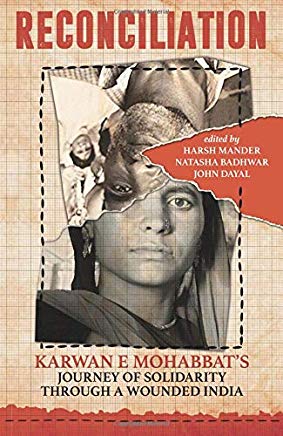This volume is a slightly rushed attempt at collecting the findings about the lynching, hate crimes and rise of cow vigilantes that have stormed the news in India over the last few years. It details the violence that has surged against Muslims, Dalits and other lower castes. While doing so, many writers take pains to establish the even more vulnerable position of women, children and the aged belonging to these backgrounds and families. The book is a result of the Karwan E Mohabbat (‘Caravan of Love’) journeys that human rights activist and social worker Harsh Mander and others initiated last year to help lend an ear to the victims of hate violence. Many elements combine to make this volume a searing indictment on the Indian state and the idea of India itself.
As an organized response to the state apathy and indifference, Harsh Mander and others gather to cover those regions, cases and families worst affected by the lynching and riots. These journeys are crowd funded. In many of them, Mander and others find hostility from the Hindu majority. At one location, in Mewat in Haryana, their bus is stoned. At the site of Pehlu Khan’s burial, Mander aims to place marigolds and is barred by the local police to do so initially and is finally allowed after much struggle. Through most of the journeys, the travellers find similar patterns: trumped up charges over beef and cattle thievery; police disengagement from investigation and often filing ‘cross cases’ against the victims of cases who have aimed to file First Information Reports; a criminal extortion economy. India does not come across as a democracy at all in these pages; indeed, it comes across as the opposite. This is an angry, upsetting book. And that is why it requires to be read.
The first part of the book records the experiences of the areas worst hit by hate violence and hate crimes. These include areas like Nellie in Assam, rural Odisha, Tilak Vihar in Delhi–signposts of sectarian and caste conflict in contemporary Indian history. It is the express intention of the editors of the book to place the context of the recent violence in a broader framework of bloodletting in a so-called secular democracy. Viewed from the perspective of the weakest and poorest, Indian democracy appears a travesty.

